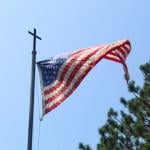Same-Sex Marriage and the Law
By David W. Opderbeck. David Opderbeck is Professor of Law at Seton Hall University Law School and is a doctoral candidate in Philosophical Theology at the University of Nottingham. He blogs at Through a Glass Darkly.
As everyone knows, the Supreme Court has finally announced its decisions in this term’s “gay marriage” cases, Hollingsworth v. Perry and United States v. Windsor. This is the second of six (I think) posts I will offer on these cases. In my first post, I peeked at the legal machinery underlying the Hollingsworth case. In this post and the next, I’ll do the same for the Windsor case. Originally I had hoped to cover Windsor in one post, but I think the differences in the Justices’ various opinions are important and require more conversation. In a fourth post, I’ll offer some thoughts on the question of Christian participation in American government and “State’s rights.” In a fifth post, I’ll discuss some differences among Christians who support traditional marriage, particularly between Evangelicals and Catholics [note: this will attempt to clarify my post from last week, which went up too soon]. In the final (I think!) post, I’ll volunteer some suggestions on how Christians – the Church – should respond to these two cases. Of course, all of these are my own thoughts, not necessarily those of any educational institution or ecclesial body to which I belong.
The Windsor Majority
The Windsor case involved the constitutionality of the federal Defense of Marriage Act (“DOMA”). Section 3 of DOMA defined “marriage” for purposes of federal law as “a legal union between one man and one woman as husband and wife,” and “spouse” to mean “only to a person of the opposite sex who is a husband or a wife.’’ One effect of this definition was that same-sex couples who had been married under State law permitting same-sex marriage could not claim certain federal law benefits available to married couples or surviving spouses, such as the federal estate tax exemption. DOMA did not, however, prohibit States from recognizing same-sex marriages.
The case reached the court after Edith Windsor sought a tax refund for $363,053 in estate taxes paid on her inheritance from her wife (as recognized by New York law), Thea Spyer. Windsor and Spyer were New York residents who had been lawfully married in Canada, and their marriage subsequently was recognized as valid under New York’s Marriage Equality Act. The lower courts ruled that DOMA was unconstitutional and rendered judgment in Windsor’s favor.
As with the Hollingsworth case, there was a complicated procedural issue in Windsor because the Executive branch decided not to enforce the law in the lower courts. However, the President limited his directive of non-enforcement of DOMA to the particular case brought by Windsor, and directed the Justice Department to continue enforcing the law in other contexts. In addition, the lower court allowed the intervention of the Bipartisan Legal Advisory Group (“BLAG”) of the House of Representatives to defend the law’s constitutionality.
Unlike in Hollingsworth, the majority in Windsor decided that there were parties before the Court with standing and that the constitutional issue was ripe for adjudication. According to the majority, “[t]he Government of the United States has a valid legal argument that it is injured [by its loss of estate tax revenues] even if the Executive disagrees with § 3 of DOMA.” Further, the Court held, “BLAG’s sharp adversarial presentation of the issue satisfies the prudential concerns that otherwise might counsel against hearing an appeal from a decision with which the principal parties agree.”
On the merits, a majority led by Justice Kennedy and including Justices Ginsburg, Breyer, Sotomayor, and Kagan, held that Section 3 of DOMA is unconstitutional under the equal protection clause of the Fifth Amendment. The majority concluded that New York, as well as eleven other States that had enacted laws permitting same-sex marriage, sought to protect gay persons as a class by extending to them the right to marry. Regulation of domestic relations, the majority noted, historically was left to the various States rather than appropriated by the federal government. “The States’ interest in defining and regulating the marital relation, subject to constitutional guarantees,” the majority stated, “stems from the understanding that marriage is more than a routine classification for purposes of certain statutory benefits.”
By seeking “to injure the very class New York seeks to protect,” the majority held, the federal statute “violates basic due process and equal protection principles applicable to the Federal Government.” In particular, the majority held that DOMA was motivated by animus against gay persons rather than by “other reasons like governmental efficiency.” Among other things, as evidence of this animus, the majority quoted from the House Report in support of DOMA, which stated that DOMA “expresses ‘both moral disapproval of homosexuality, and a moral conviction that heterosexuality better comports with traditional (especially Judeo-Christian) morality.’”
The dissenting opinions, which I’ll discuss in my next post, respond to both the procedural and substantive holdings in the majority opinion. For now, what do you think about the majority’s discussion of State vs. Federal responsibility for law-making regarding marriage? Do you think the Court should even have heard this case? Is the majority’s opinion in Windsor in conflict with the majority’s opinion in Hollingsworth?











